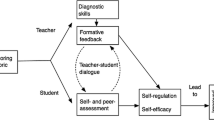Abstract
Results of a HyperCard method for assessing the performance of expert and novice high school chemistry students solving stoichiometric chemistry problems (balancing chemical equations) have been reported. The assessment involved the use of a HyperCard instrument (“Hyperequation”) developed on a Macintosh platform to administer a set of five chemistry problems, register student responses, and collect data related to student performance. The chemistry problems have been previously tested and validated in traditional (pen-paper) assessment settings by other researchers. MANOVA results indicate a significant difference between the performance of expert and novice students solving the five stoichiometric chemistry problems using the Hyperequation. The study shows promise in that a HyperCard assessment method could differentiate between the performance of experts and novices in problem solving. The implication is that HyperCard might be a suitable technology for developing performance assessment methods not only in chemistry but also in other science disciplines.
Similar content being viewed by others
References
Champagne, A. B., and Newell, S. T. (1992). Directions for research and development: Alternative methods.Journal of Research in Science Teaching 29(8): 841–860.
Chi, M. T. H., Feltovich, P. J., and Glaser, R. (1981). Categorization and representation of physics problems by experts and novices.Cognitive Science 5: 121–152.
Dunkleberger, G. E. (1980). Applying 20/20 hindsight to self-pacing.The Science Teacher 47(8): 32–34.
Ennis, C. D., and Safrit, M. J. (1991). Using a computer simulation to compare expert/novice problem-solving subroutines.British Journal of Educational Technology 22(3): 174–186.
Gabel, D. L. (1989). Problem solving in chemistry. In Gabel, D. (Ed.),What Research Says to Science Teacher, Vol. 5. NSTA, Washington, D.C.
Gardner, H. (1992). The rhetorics of school reform: Complex theories vs. the quick fix.The Chronicle of Higher Education 38(35): B1-B2.
Halasz, F. G., Moran, T. P., and Trigg, R. H. (1987). Notecards in a nutshell.Proceedings of the 1987 ACM SIGCHI Conference on Human Factors in Computing Systems ACM, New York, pp. 45–52.
Helgeson, S. L. (1992). Assessment of science teaching and learning outcomes. Panel presentation at the annual meeting of the American Educational Research Association, San Francisco, California, April.
Heyworth, R. M. (1989). Expert-novice differences in the solving of a basic problem in chemistry.Chinese University Education Journal 17(1): 59–71.
Jackson, B. (1988). A comparison between computer-based and traditional assessment tests, and their effects on pupil learning and scoring.School Science Review 62(249): 809–815.
Kumar, D. D. (1993). Hyperequation, The AGORA (Journal of the Science Education Council of Ohio) 3: 8–9.
Lee, W., and Zalatimo, S. (1990). Computer-assisted instruction with immediate feedback versus delayed feedback in learning to solve analogy items.International Journal of Instructional Media 17(4): 319–329.
Lin, R. L., Baker, E. L., and Dunbar, S. B. (1991–1992). Complex, performance-based assessment: Expectations and validation criteria.Evaluation Comments, UCLA Center for the Study of Evaluation & The National Center for Research on Evaluation, Standards and Student Testing, Los Angeles, California, pp. 2–9.
Linn, M. C. (1992). Science education reform: Building on the research base.Journal of Research in Science Teaching 29(8): 821–840.
Martin, C. D. (1991). New findings from qualitative data using hypermedia: Microcomputers, control and equity.Computers in Education 16(3): 219–227.
Niaz, M., and Lawson, A. E. (1985). Balancing chemical equations: The role of developmental level and mental capacity.Journal of Research in Science Teaching 22(1): 41–51.
Pachaury, A. C. (1991). The effect of Catell's B factor on balancing chemical equations.School Science 19(4): 56–59.
Rothman, R. (1991). E. D. Consortium seeks to spur alternative assessments.Education Week March: 34.
Schuldberg, D., and Nichols, W. G. (1990). Using HyperCard to administer a figural test on the Apple Macintosh.Behavior Research, Methods, Instruments, & Computers 22(4): 417–420.
Science Scope. (1992). Special supplement on assessment. National Science Teachers Association, Washington, D.C., March.
Shavelson, R. J., Baxter, G. P., Pine, J., Yure, J., Goldman, S., and Smith, B. (1990).Performance indicators for large-scale science assessment. Paper presented at the annual meeting of the American Educational Research Association, Boston, April.
Stebbins, B. (1990). HyperCard: The tool for the classrooms of tomorrow.Computers in the Schools 7(4): 7–73.
Summers, G. (1984). Tester.Journal of College Science Teaching 13(5): 356–358.
Author information
Authors and Affiliations
Rights and permissions
About this article
Cite this article
Kumar, D.D. Assessment of expert-novice chemistry problem solving using HyperCard: Early findings. J Sci Educ Technol 2, 481–485 (1993). https://doi.org/10.1007/BF00694430
Issue Date:
DOI: https://doi.org/10.1007/BF00694430




